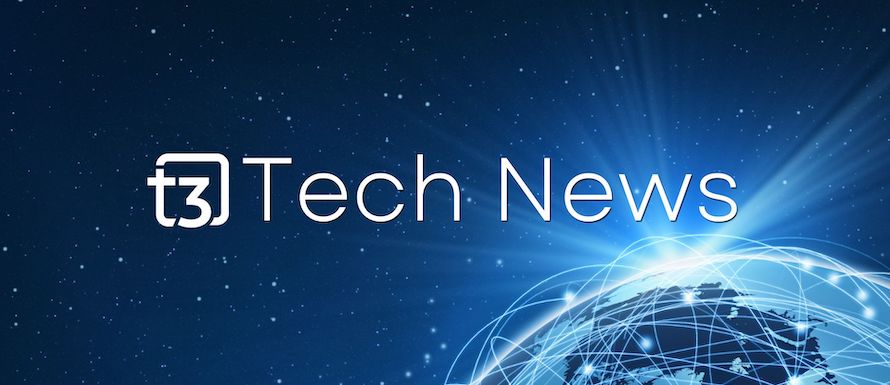Techem’s Climate Tech Pivot: A Beacon for Sustainable Infrastructure Investors – AInvest

Techem’s Strategic Alignment with Sustainable Development Goals in the Real Estate Sector
Executive Summary
Techem is strategically positioning itself as a leader in sustainable infrastructure by transforming the real estate sector’s approach to energy consumption and carbon emissions. The company’s initiatives in digital decarbonization, electric vehicle (EV) infrastructure, and strong Environmental, Social, and Governance (ESG) performance demonstrate a significant contribution toward achieving multiple United Nations Sustainable Development Goals (SDGs). This report analyzes Techem’s operational strategy, market position, and financial outlook through the lens of its impact on the SDGs, particularly SDG 7 (Affordable and Clean Energy), SDG 9 (Industry, Innovation, and Infrastructure), SDG 11 (Sustainable Cities and Communities), and SDG 13 (Climate Action).
Core Contributions to Sustainable Development Goals (SDGs)
SDG 13: Climate Action
Techem’s primary strategy is to decouple real estate growth from carbon emissions, directly addressing the targets of SDG 13. The company’s climate action initiatives are evidenced by:
- A reported 18% reduction in its Scope 3 emissions since 2020.
- The deployment of its Digital Decarbonization Platform, an AI-driven system for optimizing energy use, which is operational in half of its contracting facilities.
- Adherence to Task Force on Climate-related Financial Disclosures (TCFD) and European Sustainability Reporting Standards (ESRS) for transparent climate risk assessment.
SDG 7: Affordable and Clean Energy & SDG 11: Sustainable Cities and Communities
Techem enhances energy efficiency in urban environments, a key component of both SDG 7 and SDG 11. By making buildings more sustainable, the company contributes to cleaner and more resilient cities.
- Energy Efficiency Solutions: Pilot programs using Digital Heating Rooms have demonstrated a 15% reduction in energy consumption, making energy more affordable for residents.
- Smart Metering Infrastructure: With 13 million dwellings under management across 18 countries, Techem utilizes smart metering, with 84% of devices monitored remotely, to optimize energy usage on a large scale.
- EV Charging Infrastructure: The installation of 1,514 EV charging points (with a target of 5,000 by 2027) supports the transition to clean mobility within communities.
SDG 9: Industry, Innovation, and Infrastructure
The company is a key player in building the sustainable infrastructure required by SDG 9. Its focus on climate technology and digital platforms represents a significant innovation in the real estate industry.
- Technological Leadership: Techem’s AI-driven energy monitoring systems give it a competitive advantage in the market for sustainable building solutions.
- Infrastructure Expansion: The rollout of a large-scale EV charging network is a direct investment in the sustainable infrastructure needed for future cities.
SDG 17: Partnerships for the Goals
Techem’s 2024 partnership with TPG Rise Climate and GIC exemplifies the multi-stakeholder collaborations essential for achieving the SDGs. These alliances provide access to critical financing and expertise, enabling the scaling of climate solutions in the $2.4 trillion sustainable infrastructure market.
SDG 5: Gender Equality & SDG 8: Decent Work and Economic Growth
Techem demonstrates a commitment to social sustainability, aligning with SDG 5 and SDG 8. The company reports 31.9% female representation in leadership roles, with a target of 35% by 2025. Furthermore, its “berufundfamilie” certification for promoting work-life balance underscores its commitment to decent work, which is crucial for retaining talent and driving innovation.
Market Position and Financial Analysis
ESG Leadership as a Financial Driver
Techem’s ESG credentials are a core component of its value proposition. Morningstar Sustainalytics ranks the company in the top 3% of over 16,000 global firms for ESG performance, classifying it as a “negligible risk” investment. This leadership attracts institutional investors and facilitates access to non-dilutive debt financing for sustainable projects.
Market Opportunity in Energy Efficiency
Regulatory frameworks are creating significant demand for Techem’s services. The EU’s Fit for 55 plan is projected to create a $200 billion retrofit market, while the U.S. Inflation Reduction Act is also accelerating demand for sustainable infrastructure. Techem’s established solutions position it to capitalize on this global shift.
Risk Assessment
Key risks include a recent 19% decline in global climate tech funding and potential competition from established industrial firms like Siemens and Honeywell. However, Techem’s diversified revenue model—spanning smart metering, circular economy practices, and data analytics—provides resilience against sector-specific volatility. Its strong corporate culture and talent retention strategy also serve as a key mitigator against competitive pressures.
Investment Outlook
Key Catalysts and Recommendations
Techem’s integration of SDG principles into its core business model presents a compelling investment case. The long-term structural demand for decarbonized real estate underpins its growth trajectory.
- Strategic Accumulation: Market volatility may present opportunities to invest in a company with strong fundamentals aligned with global sustainability targets.
- Green Financing: The company’s access to ESG-linked bonds and green financing may offer stable and impactful investment vehicles.
- Growth Monitoring: Progress toward the 5,000 EV charging station target by 2027 serves as a key performance indicator for its infrastructure expansion and contribution to SDG 11.
Analysis of Sustainable Development Goals (SDGs) in the Article
-
Which SDGs are addressed or connected to the issues highlighted in the article?
The article on Techem’s climate tech pivot and sustainable infrastructure initiatives addresses several Sustainable Development Goals (SDGs). The company’s focus on decarbonization, energy efficiency, sustainable infrastructure, and corporate responsibility directly aligns with the following goals:
- SDG 5: Gender Equality: The article explicitly mentions the company’s efforts and targets for female representation in leadership roles.
- SDG 7: Affordable and Clean Energy: Techem’s core business of improving energy efficiency in buildings and providing smart energy solutions is central to this goal.
- SDG 9: Industry, Innovation and Infrastructure: The development and deployment of sustainable infrastructure, such as the EV charging network and the Digital Decarbonization Platform, are key themes.
- SDG 11: Sustainable Cities and Communities: By making buildings in urban areas more energy-efficient and providing infrastructure for electric mobility, Techem contributes to creating more sustainable urban environments.
- SDG 13: Climate Action: The entire strategy of Techem, as described in the article, is centered on climate action through the reduction of carbon emissions in the real estate sector.
- SDG 17: Partnerships for the Goals: The article highlights strategic partnerships with major sustainable infrastructure investors to scale climate solutions.
-
What specific targets under those SDGs can be identified based on the article’s content?
Based on the activities and strategies described, the following specific SDG targets can be identified:
- Target 5.5: Ensure women’s full and effective participation and equal opportunities for leadership at all levels of decision-making.
The article supports this by stating Techem has “31.9% female leadership representation” and is “targeting 35% by 2025,” demonstrating a clear commitment to increasing women’s roles in leadership. - Target 7.3: By 2030, double the global rate of improvement in energy efficiency.
Techem’s work directly addresses this target. The article notes that its solutions, like “Digital Heating Rooms,” are “reducing energy consumption by 15% in pilot buildings,” contributing to overall energy efficiency improvements. - Target 9.4: By 2030, upgrade infrastructure and retrofit industries to make them sustainable…and greater adoption of clean and environmentally sound technologies and industrial processes.
This is reflected in Techem’s rollout of “1,514 charging points installed by late 2024” and its use of an “AI-driven energy monitoring system” to decarbonize real estate. - Target 11.6: By 2030, reduce the adverse per capita environmental impact of cities, including by paying special attention to air quality and municipal and other waste management.
Techem’s strategy to decouple “real estate growth from carbon emissions” and its achievement of reducing “Scope 3 emissions by 18% since 2020” in its managed properties directly contribute to lowering the environmental footprint of urban areas. - Target 13.2: Integrate climate change measures into national policies, strategies and planning.
While Techem is a company, its corporate strategy fully integrates climate change measures. The article emphasizes its role in helping clients meet regulations like the “EU’s Fit for 55 plan” and providing “ESRS-compliant reporting,” thereby operationalizing climate action at a business level. - Target 17.17: Encourage and promote effective public, public-private and civil society partnerships, building on the experience and resourcing strategies of partnerships.
The article explicitly mentions Techem’s “2024 partnership with TPG Rise Climate and GIC, two of the world’s largest sustainable infrastructure investors,” which is a clear example of a private-private partnership to advance sustainable development.
- Target 5.5: Ensure women’s full and effective participation and equal opportunities for leadership at all levels of decision-making.
-
Are there any indicators mentioned or implied in the article that can be used to measure progress towards the identified targets?
Yes, the article provides several specific, quantifiable indicators that can be used to measure progress:
- Indicator for Target 5.5: The proportion of women in managerial positions. The article provides the exact figure: “31.9% female leadership representation” and a future target of “35% by 2025.”
- Indicator for Target 7.3: Improvement in energy intensity. The article provides a direct measure of this with the “15%” reduction in energy consumption in pilot buildings.
- Indicator for Target 9.4 & 11.2: The number of EV charging points installed. The article states “1,514 charging points installed by late 2024” and a target of “5,000 by 2027.”
- Indicator for Target 11.6 & 13.2: Reduction in CO2 emissions. The article provides a clear metric: “reduced its own Scope 3 emissions by 18% since 2020.”
- Indicator for Target 17.17: The existence and nature of partnerships. The article names the specific partners (“TPG Rise Climate and GIC”) and the purpose of the partnership (to “unlock access to non-dilutive debt financing” and “scaling climate solutions”).
-
Create a table with three columns titled ‘SDGs, Targets and Indicators” to present the findings from analyzing the article.
SDGs Targets Indicators SDG 5: Gender Equality 5.5: Ensure women’s full and effective participation and equal opportunities for leadership. 31.9% female leadership representation, with a target of 35% by 2025. SDG 7: Affordable and Clean Energy 7.3: Double the global rate of improvement in energy efficiency. 15% reduction in energy consumption in pilot buildings through digital solutions. SDG 9: Industry, Innovation and Infrastructure 9.4: Upgrade infrastructure and retrofit industries to make them sustainable. Installation of 1,514 EV charging points by late 2024 (targeting 5,000 by 2027); deployment of a Digital Decarbonization Platform. SDG 11: Sustainable Cities and Communities 11.6: Reduce the adverse per capita environmental impact of cities. Management of 13 million dwellings across 18 countries with decarbonization mandates. SDG 13: Climate Action 13.2: Integrate climate change measures into policies, strategies and planning. Reduction of Scope 3 emissions by 18% since 2020; corporate strategy focused on decoupling growth from carbon emissions. SDG 17: Partnerships for the Goals 17.17: Encourage and promote effective public, public-private and civil society partnerships. Strategic partnership with TPG Rise Climate and GIC to scale climate solutions and access financing.
Source: ainvest.com

What is Your Reaction?
 Like
0
Like
0
 Dislike
0
Dislike
0
 Love
0
Love
0
 Funny
0
Funny
0
 Angry
0
Angry
0
 Sad
0
Sad
0
 Wow
0
Wow
0





































![Lancaster homeowner’s energy-efficient renovation sparks clash over historic preservation [Lancaster Watchdog] – LancasterOnline](https://bloximages.newyork1.vip.townnews.com/lancasteronline.com/content/tncms/assets/v3/editorial/9/ed/9ed03d32-c902-44d2-a461-78ad888eec38/69050b156baeb.image.png?resize=150,75#)









































